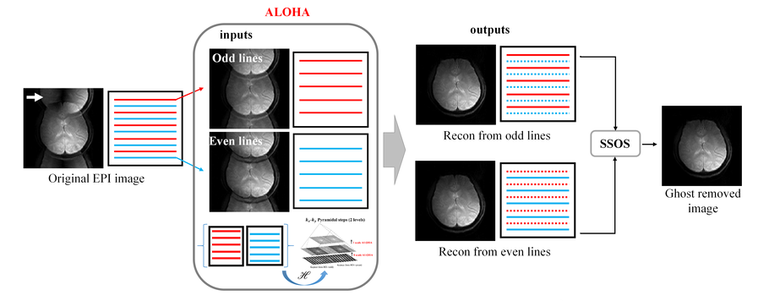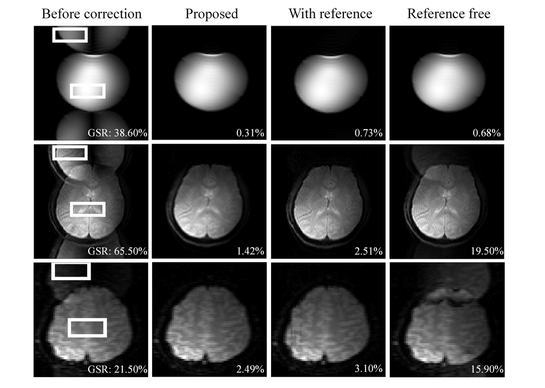Reference-Free Single-Pass EPI Nyquist Ghost Correction Using Annihilating Filter-Based Low Rank Hankel Matrix (ALOHA)
|
Purpose: MR measurements from an echo-planar imaging (EPI) sequence produce Nyquist ghost artifacts that originate from inconsistencies between odd and even echoes. Several reconstruction algorithms have been proposed to reduce such artifacts, but most of these methods require either additional reference scans or multipass EPI acquisition. This article proposes a novel and accurate single-pass EPI ghost artifact correction method that does not require any additional reference data.
Theory and Methods: After converting a ghost correction problem into separate k-space data interpolation problems for even and odd phase encoding, our algorithm exploits an observation that the differential k-space data between the even and odd echoes is a Fourier transform of an underlying sparse image. Accordingly, we can construct a rank-deficient Hankel structured matrix, whose missing data can be recovered using an annihilating filter-based low rank Hankel structured matrix completion approach. Results: The proposed method was applied to EPI data for both single and multicoil acquisitions. Experimental results using in vivo data confirmed that the proposed method can completely remove ghost artifacts successfully without prescan echoes. Conclusion: Owing to the discovery of the annihilating filter relationship from the intrinsic EPI image property, the proposed method successfully suppresses ghost artifacts without a prescan step. |


